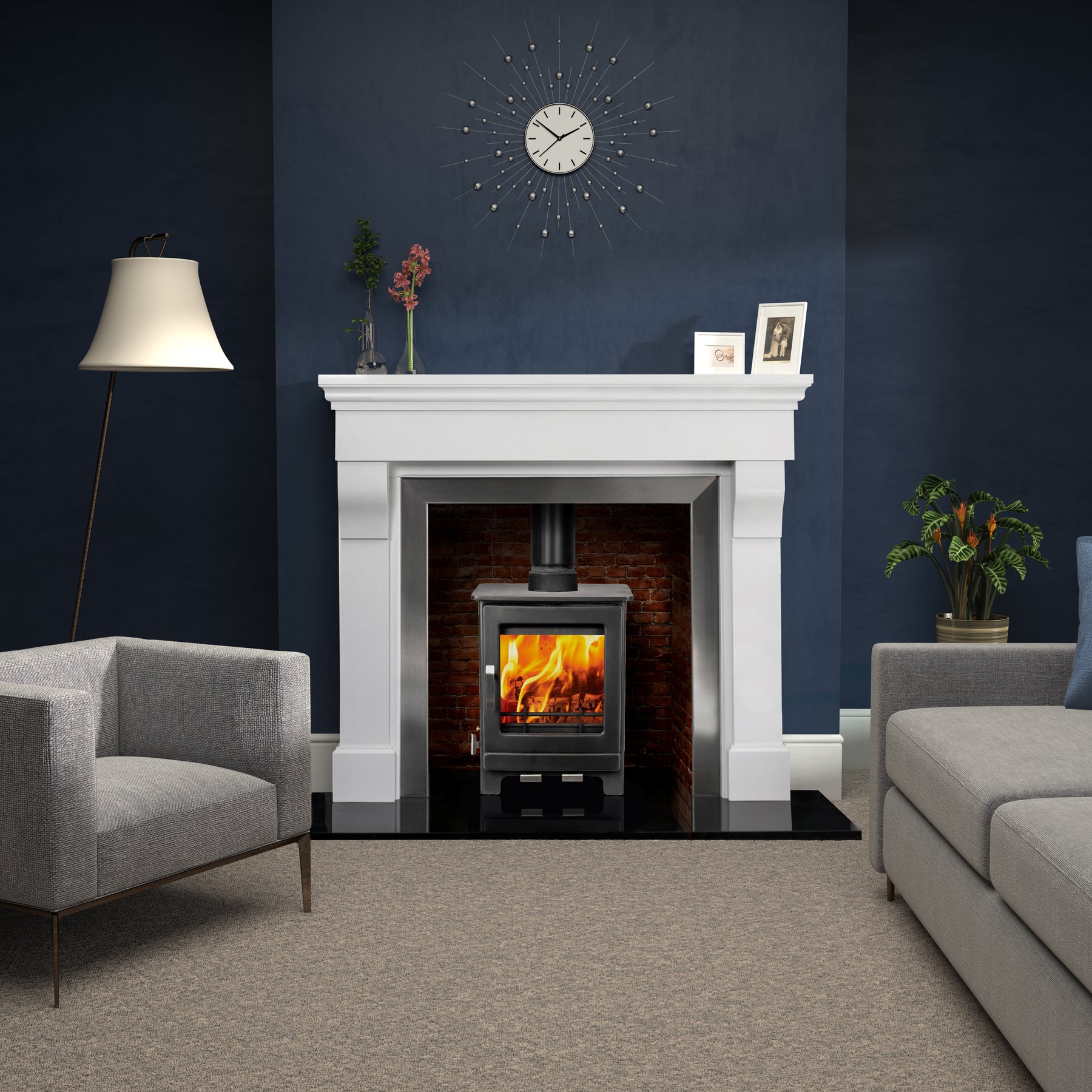0121 271 0221

The History of the Modern Woodburning Stove
Benjamin Franklin is probably best-known as one of the Founding Fathers of the United States of America. But to Gr8fires.co.uk, he will always be most appreciated as the founding father of the modern day stove.
Of course, humankind has been using fire to create heat - and for all sorts of other uses - for thousands of years, but it is only in the past 400 years or so that stoves were established as the most efficient way of doing this.
A foundry based in Massachusetts is credited with being the first to construct a box of cast iron plates with the intention of burning wood inside in 1642.
It was over 100 years later when Franklin created the Franklin stove (Image right). The Pennsylvania-based politician and inventor created a stove with a hollow baffle at the rear with the intention of increasing the heat and reducing the amount smoke that would be circulated around a room.
In fact, there is a European claim to the invention of the modern stove too. In 1735, the Belgian architect Francois de Cuvilliés introduced his Castrol stove – which later became known as the ‘stew stove’. This was an enclosed stove with a flat top. Cuvilliés’ intention was for meals to be warmed on top of the stove.
The stew stove pre-dates the Franklin stove, but was a masonry construction covered in perforated iron plates whereas Franklin’s design was made entirely of metal.
The design – which Franklin refused to patent – has steadily evolved over the years but retained many of its original features. The Franklin stove moniker stuck too, particularly in the USA.
One of the most well-known developments in the stove’s history came at the end of the 18th century when Benjamin Thompson – also known as Count Rumford – published an article explaining how chimneys work and suggesting an improved design. His idea featured a slanted fireback and adjustable flue damper which became the norm in the majority of stoves.
Thompson’s design was mainly aimed at large estates and working kitchens in stately homes, so the next stage in the history of the wood burner saw the stove being scaled down to be incorporated into more homes.
This was done most successfully by Philo Stewart, who patented his Oberlin stove in the US in 1834. The cast-iron stove became a big success and more than 90,000 were sold over the next three decades. Similar small domestic stoves were also becoming popular in Europe during this period.
Broadly speaking, these designs have stood the test of time. Aesthetically, stoves have moved on according to the tastes of the period but the basic workings have remained.
The main advancements have been the increasing steps towards great efficiency and, more recently, a reduction in overall household energy bills. Biofuel stoves, which burn biomass or pellets, have been introduced.
Another popular innovation has been boiler stoves, whereby the heat from the stove is used to heat a back-boiler (Image Left Modern Boiler Stove). The stove boiler can be linked into the central heating to heat the rest of the property and water.
Improvements in the quality of steel have allowed air-tight stoves to be manufactured from sheets of steel. Traditional stoves are made from panels of cast iron joined together. As well as improving efficiency, this also allows more intricate stove designs.
With the popularity of wood-burning stoves now on the rise once again, it remains to be seen how they will be developed further in the coming years.
